Words, Words, Words: Judging Hamlet by its Cover
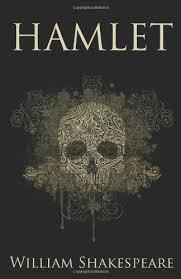
Image Credit: Syed Hunbbel Meer
A text that people have been reading and publishing for hundreds of years is bound to have had a variety of covers in that time. William Shakespeare’s Hamlet has not only seen many printed editions in the years since it was first published in 1603, but has been produced in book form by many different publishers in recent years. This wealth of modern covers of Hamlet shows how publishers have interpreted what is significant and what is saleable about the play. Many of the covers show the most famous image from the play: Hamlet with the skull in his hand.
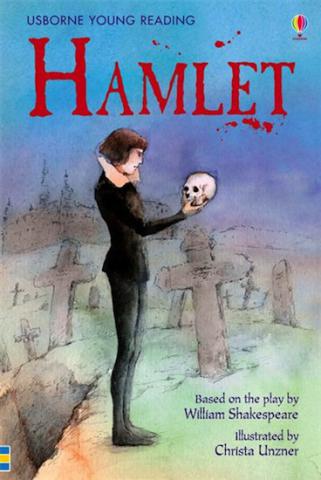
Image Credit: Usborne Children's Books
The cover of this children’s illustrated Hamlet, by Usborne’s Children’s Books, gives the most literal rendering of what Hamlet actually does with the skull in the play. In roughly Renaissance dress, Hamlet holds the skull in a Christian graveyard, making what appears to be direct eye contact with it. He is even right in front of an open grave, presumably Ophelia’s. However, what this interpretation changes about the story is that Hamlet is alone, without Horatio or the First Gravedigger to keep him company. The illustrator sees Hamlet as alone in the world, and perhaps assumes that there is something about this feeling of solitude with which children will identify.
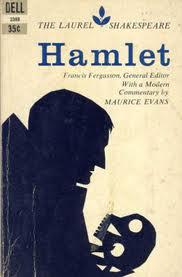
Image Credit: pagepulp.com
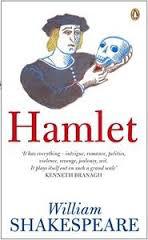
Image Credit: Penguin Shakespeare
Some Hamlets for adults also show Hamlet with a skull in his hand, trading on the familiarity of the image. However, these covers do not show Hamlet’s full body, focusing instead on the head of the man who is perhaps literature’s most famously contemplative character. In pairing the dead and empty skull with Hamlet’s active brain, the covers suggest Hamlet’s engagement with the idea of death and foreshadow the play’s violent ending. The Laurel Shakespeare cover shows an ambiguously costumed Hamlet in silhouette, suggesting a potentially dangerous and also modernized Hamlet appropriate to the “modern commentary” that the cover offers. The Penguin Shakespeare, often assigned in schools, shows a less threatening, somewhat cartoonish Hamlet in vaguely Renaissance dress. It warns students to expect something old-fashioned, but still implies that the play is concerned with death.
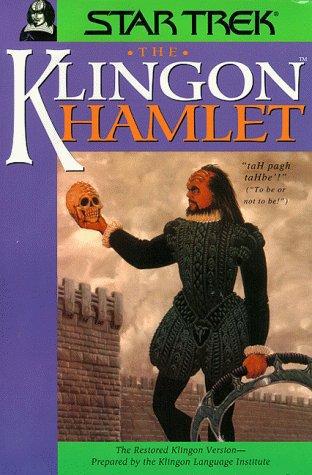
Image Credit: Wikipedia
Even the Klingon translation of Hamlet shows Hamlet holding the skull. In his other hand, he holds a bat’leth, a traditional Klingon weapon, implying that he may be about to kill himself or someone else (the bat’leth would make it easier to do the latter) at any moment. Amusingly, this Klingon Hamlet has the most detailed Renaissance dress of any of the images of Hamlet I found in my quest. The image suggests authenticity through Hamlet’s clothing, the stereotypical skull, and the castle setting. However, it also clearly shows the adaptation at work, portraying a bat’leth rather than a “bare bodkin” and putting the Klingon quote on the cover along with its translation. The Klingon Hamlet was inspired by a line in the movie Star Trek VI: The Undiscovered Country, in which Chancellor Gorkon claims, “You have not experienced Shakespeare until you have read him in the original Klingon.” Hence, the “original Klingon” version both claims authenticity and shows its uniquely Klingon nature.
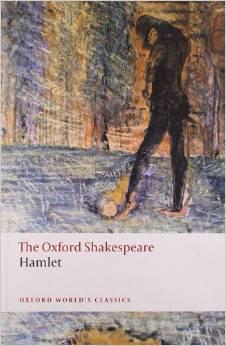
Image Credit: Amazon.com

Image Credit: Amazon.com
Some recent scholarly editions of Hamlet have chosen covers that do not show the skull at all, or even Hamlet. The Oxford World’s Classics edition of Hamlet shows a portrait of Shakespeare by Max Jacob, though the black-clad figure in vaguely Renaissance clothing against a dark background could easily be mistaken for Hamlet himself. This cover for a scholarly edition makes the genius of Shakespeare the most important thing about Hamlet, not the stereotypical conception of Hamlet’s relationship to death. The New Cambridge Shakespeare uses a black-and-white photograph of hands, gloved in white and black, holding fencing foils. This complex image curiously suggests a morally simple play, but one relevant to modern times and with stylized violence at its heart. Both of these scholarly editions show the publisher’s interpretation of what Hamlet is about and what will make Hamlet sell – not Hamlet himself, but Shakespeare the man and modern relevance respectively.

Image Credit: Amazon.com 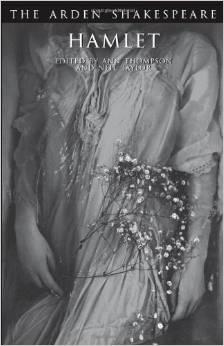
Image Credit: Amazon.com
The Folger and Arden scholarly editions not only banish Hamlet from their covers, but also invite a different character to grace them, albeit without showing her face. The Folger cover symbolizes the presence of Ophelia by portraying water and flowers, suggesting her death scene without literally showing it on the cover. This milder but equally moving version of death suggests the play’s descriptive beauty, while also evoking recent feminist readings of the play that emphasize Ophelia’s role and significance. The Arden cover shows Ophelia more explicitly, but still incompletely, with a photograph of a headless body draped in a loose dress, holding flowers that appear to be dead. The posture of the body suggests that it is living, but the dried-looking flowers imply that death is inevitable. The person portrayed could also be Gertrude, about to strew dead flowers on Ophelia’s grave. Either way, the cover emphasizes the female characters in the play while demonstrating how trapped they are by the intrigue around them and its deadly results. Both the Folger and Arden covers show attractive images that are no less dominated by the inevitability of death than those that actually show the skull.
The wide variety of covers shows the different ways in which publishers today choose to sell a play that is so well known and has such a high level of cultural capital. Most of the covers don’t have to tell you what happens in the play, or that Hamlet is worth your while, but they do have to tell you why you should buy this particular edition. The artistic covers of the scholarly editions suggest their level of sophistication, arguing that you will be buying the version with notes of the highest quality. The Klingon Hamlet cover shows that it is both humorous and somehow true to the spirit of the original play. The non-scholarly adult Hamlets, for those who are looking to have a somewhat mysterious play made clear to them by the version they buy, show a stereotypical image of Hamlet holding the skull, making it clear that this is the play you think it is. Finally, the children’s Hamlet, which does to some degree have to tell its audience what happens in the play, gives the most accurate portrayal of the setting in which Hamlet holds the skull. Each edition pitches itself as a superior choice for its target audience though the cover image it uses. None of the images, however, not even the children’s one, can entirely avoid the shadow of death.



Add new comment